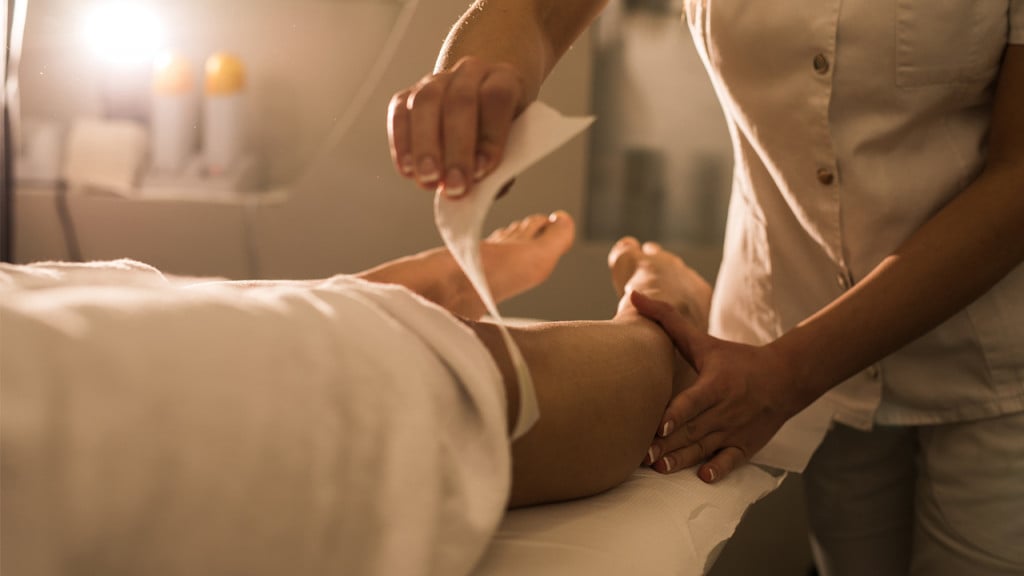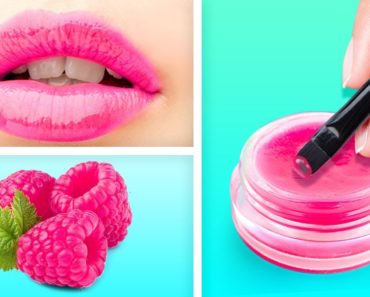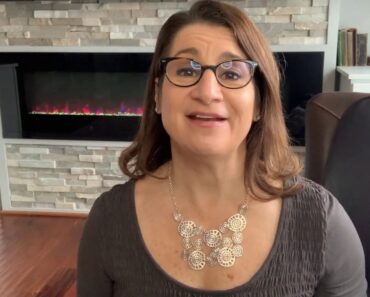
Photo: iStockphoto
At nine years old, Hengameh Mirza’s* daughter Rogine* snuck off to the shower with her dad’s razor and shaved off all the hair on her arms and legs, and the patch between her eyebrows. A Persian Vancouverite living in Los Angeles, Rogine was tired of being bullied by her classmates, singled out for her “spider legs” and “unibrow.”
“It was always the boys who would gang up on me,” she says. At the time, she was enrolled in a private Christian school. “Every single one of my friends was white with blond hair and blue eyes—and blonde leg hair—and I was this brown-skinned girl with dark hair and a unibrow,” she says. “I used to wish I was white.”
After the initial shock wore off, Mirza decided that teaching her daughter safe hair removal was the best next step. “I said, ‘You know what, if it’s bothering you that much, let’s take care of it. It’s personal hygiene.” As a mom of two girls, Mirza also couldn’t help but empathize with her daughter. “At that time, she just wanted to feel supported and understood,” she says.
Rogine, now 17, kept shaving her arms and legs (and eventually her bikini area) until her mom thought she was ready for waxing, which is more painful, a few years later.
A growing number of pre-teens of all ethnicities are turning to professionals for hair removal to make themselves feel more accepted in their changing bodies. Waxing salons and dermatologist-owned laser clinics report seeing clients as young as eight years old.
Kids are growing up in the age of Instagram and YouTube, which heightens how self-conscious they feel about their appearances as they enter adolescence. Plus, some research shows that kids are going through puberty earlier. While some young millennials and celebrities such as Cardi B, Amandla Stenberg and Bekah Martinez are embracing the more natural let-it-grow body hair trend, the beauty ideal for both girls and boys is still pretty straight-up smooth and hairless.
Tweens are turning to the pros
 I overwaxed and now I’m sad my daughters won’t see what a real bush looks likeSome hair removal salons in Toronto report that tweens make up to 10 percent of their clientele—and that there’s been a marked increase from just a few years ago. Today’s generation of parents are also more aware of professional services, and if it means their kids can remove unwanted hair in a more efficient way than shaving from the start, they’re willing to pay for it. (Waxing weakens hair growth from the root and the hair tends to grow back softer than hair that’s been shaved.)
I overwaxed and now I’m sad my daughters won’t see what a real bush looks likeSome hair removal salons in Toronto report that tweens make up to 10 percent of their clientele—and that there’s been a marked increase from just a few years ago. Today’s generation of parents are also more aware of professional services, and if it means their kids can remove unwanted hair in a more efficient way than shaving from the start, they’re willing to pay for it. (Waxing weakens hair growth from the root and the hair tends to grow back softer than hair that’s been shaved.)
For example, Sugarmoon Salon in Toronto has a service line especially for tweens and teens called “Sweetmoon,” with discounted pricing on sugaring, a method that is similar to waxing but is said to be gentler on the skin and made with more natural ingredients (only sugar, water and lemon juice, without using additives or cloth strips). The most popular sugaring services are for face, arms and bikini—and the salon sees girls as young as eight coming in with a parent.
“At that age they’re swimming, so they don’t want it to show through their bathing suits,” says Annette Palumbo, the operations manager for Sugarmoon. The salon also sees plenty of boys doing brows, chest and back as young as age 12.
“Social media has really upped the ante about how young people want to look,” says Palumbo. “Younger people are doing everything—shellac nails, gel nails, hair, balayage. It’s gotten to the point where they’re the mini-me of an adult.”
Some salons, like Allure Body Bar in Toronto, also cater to young people who are grooming for religious or cultural reasons. According to owner Alaa Abbassi, Islamic religious practices specify that the removal (or trimming) of pubic and underarm hair should be initiated for both men and women after the onset of puberty for hygienic reasons, and done at least once every 40 days. Her tween and teen customers start with a consultation, always with a parent involved—simply talking about the procedure, getting comfortable in the environment and maybe doing a patch test to see how they handle it. Both Palumbo and Abbassi agree that if it seems like a kid is being pressured into a procedure, the aestheticians at any reputable salon won’t go ahead with it. At times, they’ve had tween and teen clients change their mind in the room, which is totally acceptable.
Are waxing and laser hair removal safe for kids?
There are currently no Canadian evidence-based guidelines on recommendations for hair removal in kids, nor is there evidence of the effects of various hair removal techniques on children, says Rebecca Levy, a physician specializing in dermatology at The Hospital for Sick Children in Toronto. However, the Canadian Dermatology Association breaks down the pros, cons and tips of all the different methods among men and women in general. For example, while shaving is the most popular method of hair removal (cheap, quick, convenient and relatively painless), there is the risk of getting cuts, fast regrowth and ingrown hairs. In comparison, waxing pulls hair out from the root, resulting in slower regrowth (two to three weeks) but is more painful, and extra caution is necessary to ensure the warm wax is not so hot that it burns the skin. Then there are longer-term and much more expensive methods such as laser treatment, which has serious risks including eye damage (from exposure to direct or reflected beams), burns and scarring—so is advised only after consultation with a dermatologist or under a dermatologist’s supervision. Costs for these different hair removal methods vary: it’s about $20 to $50 for a monthly waxing session, and around $300 per visit at a laser clinic.
“Pursuing hair removal in pre-adolescents and adolescents remains a personal and family decision,” says Levy. However, when certain medical conditions are involved, some hair removal techniques may be preferred over others, she says. For example, in hidradenitis suppurativa, a chronic and progressive inflammatory disorder involving the hair follicle, laser hair removal may be recommended, as shaving and waxing may aggravate the underlying condition. In other cases, excessive hair growth in children is a red flag that should prompt parents to seek medical advice. “Examples of red flags include axillary (underarm) or pubic hair growth in pre-pubertal children,” says Levy. “Excessive facial hair growth in females, particularly when accompanied by menstrual irregularities, acne, or thinning of scalp hair,” could also be a sign of a hormonal issue, she says.
Be careful about broadcasting or imposing beauty ideals
Talking about body hair with your tween can be a sensitive or uncomfortable topic for both of you, but it should be a part of the puberty conversation, say child psychologists. Unintentionally relaying (or reinforcing) the idea that young teens—especially girls—need to alter their physical appearance in order to be accepted is very tricky territory for a parent.
“Overall, [hair removal] is transforming or manipulating the body to look differently and to fit into a very tiny box of what’s an ideal stereotype,” says Anusha Kassan, a psychologist and associate professor at the University of Calgary who specializes in cultural identity, body image and adolescent development.
First, try to understand where the desire or bias to remove body hair is coming from, says Amy Green, a doctoral candidate in counselling psychology who works with Kassan at the University of Calgary. “With body image, the literature is showing that even as early as six, or even four, little girls are having body dissatisfaction and wanting to change the way they eat, and start dieting, and that’s really sad,” she says. “I think a good place to start is with the parents asking themselves, what are their biases and appearance values? Is it coming from them, or is it the child’s issue?”
Kassan also notes that for girls with darker hair or skin, it’s a much more visible issue, that may come up at a younger age. “Racialized women can experience a sense of ‘othering’ based on their skin colour, but also for their hair. For young girls who are often from diverse cultures or backgrounds or have darker skin, if they have more body hair, they’re going to feel, at times, a little different from their peers, so that sense of othering will be amplified,” she says. “That can ramp up the emotional challenges that they might be facing, including anxiety at school—they kind of get a double whammy.”
She recommends parents talk about body hair with their children by framing it as a developmental process, rather than a gendered process. (Don’t say, for example, “girls are supposed to look like this when they become women, and guys are supposed to deal with body hair this way.”)
“Obviously, there’s more pressure on women and girls to go through hair removal, but I’m sure a lot of boys and men would say there’s pressure on them, too,” says Kassan. Embrace open dialogues about puberty and body awareness while steering clear of gender expectations, she advises. “There’s a danger of reinforcing the binary if we talk about it in a very gendered way.”
Sometimes you just need to trust your instincts and support your child in the best way that makes sense to you, adds Green. “It’s a personal decision: some parents will take a stand and say ‘no alteration’—that this will help their child build resilience. Others might jump at the chance to help relieve the stress for their child and help them change their appearance [to fit in],” she says.
Green warns parents to remember that waxing or shaving a child’s body hair is not necessarily going to put an end to bullying or ridicule at school. “Often the issue is not with your child, the issue is with the bully—the bully will find any reason to bully whomever they feel like bullying.”
If my child doesn’t realize they’re getting hairy, do I tell them?
Jasmine Rehman,* an Afghan-Canadian mom living in Toronto, has debated whether to have the body hair talk with her eight-year-old daughter, Sara,* who has been teased by her school friends for the thick layer of hair on her upper lip. Both Rehman and Sara have light skin but very dark hair, which makes it even more noticeable. “Sara’s convinced it’s a paint stain from an art class that just won’t go away, and she keeps correcting people. It’s heartbreaking and innocent,” says Rehman.
Sara was upset and confused after she was singled out for her lip hair, but Rehman says she can’t bring herself to tell her daughter the truth yet. She also doesn’t want to suggest waxing until Sara’s much older and able to tolerate the pain—probably at least 13 years old, the age at which her own mother gave Rehman her first leg wax with a homemade recipe of sugar and lemon. “My tactic is to let her reach an age and stage where she realizes it’s hair and is willing to take the pain. Poor kid.”
When Sara starts catching on to social pressures from her peer group and asking her mom why she plucks her own brows or waxes her arms, Rehman plans to be honest. “I’ll tell her I was teased as an adolescent and I’ll take her to the salon when she’s older if she wants to get waxed,” she says. “If she wants to do it to feel good, that’s fine, but if she feels good about herself as is, that’s amazing.”
This sense of confidence, and feeling beautiful in her own skin, is something Rogine wishes she had, looking back at her nine-year-old self. But at the time, she couldn’t stop comparing herself to her blonde BFFs. “I shouldn’t have let other people influence my decision and I shouldn’t have seen my hair as a bad thing,” she says.
It’s a message her mom has tried to encourage as much as possible. “I have always said, ‘You enjoy your beautiful hair on your head,” recalls Mirza. “It’s sexier, it’s fuller, it’s more exotic and it’s gorgeous—and you just have to deal with the rest of your body being hairy.”
*Names have been changed.
Read more:
I was a ten-year-old on Weight Watchers and it took decades to shed the pain
How to raise a feminist



































